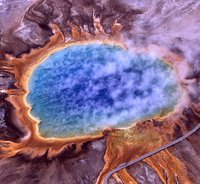
The ammonia-oxidizing archaeon (AOA) Nitrosopumilus maritimus strain SCM1 (N. maritimus strain SCM1), a representative of the Thaumarchaeota archaeal phylum, can sustain high specific rates of ammonia-oxidation at ammonia concentrations too low to sustain metabolism by ammonia-oxidizing bacteria (AOB). One structural and biochemical difference between N. maritimus and AOB that might be related to the adaptation of N. maritimus to low nutrient conditions is the cell surface. A proteinaceous surface layer (S-layer) comprises the outermost boundary of the N. maritimus cell envelope, as opposed to the lipopolysaccharide coat of Gram-negative AOB. In this work, we characterized the surface of two archaea having an S-layer with that of four-representative AOB with chemical techniques to evaluate differences in surface reactivities. Since these alternative boundary layers mediate interaction with the local external environment, these data provide the basis for further comparisons of surface reactivity toward essential nutrients.
 Getting Under Europa’s Skin
Getting Under Europa’s Skin Tracing Formation and Evolution of Outer Solar System Bodies Through Stable Isotopes and Noble Gas Abundances
Tracing Formation and Evolution of Outer Solar System Bodies Through Stable Isotopes and Noble Gas Abundances Photosynthesis, a Planetary Revolution
Photosynthesis, a Planetary Revolution Xenon: King of the Gases
Xenon: King of the Gases